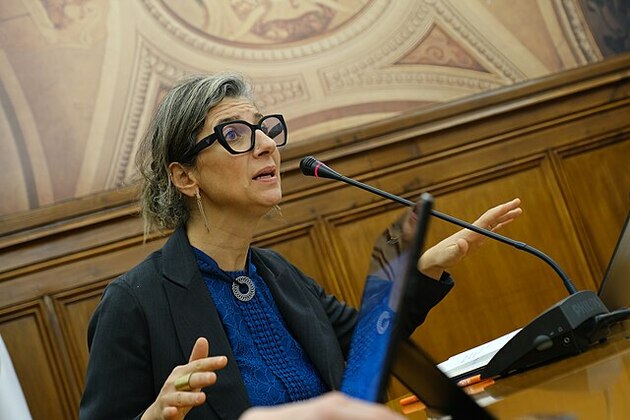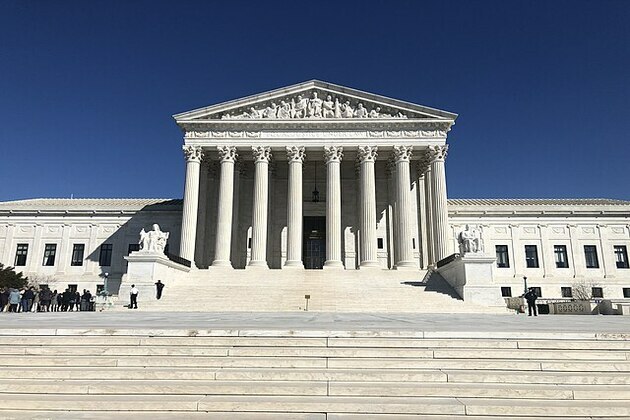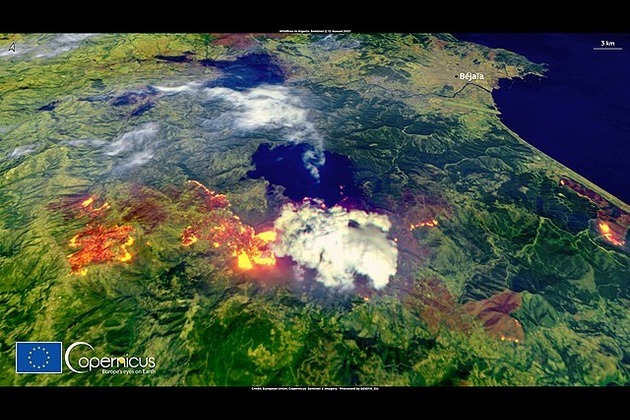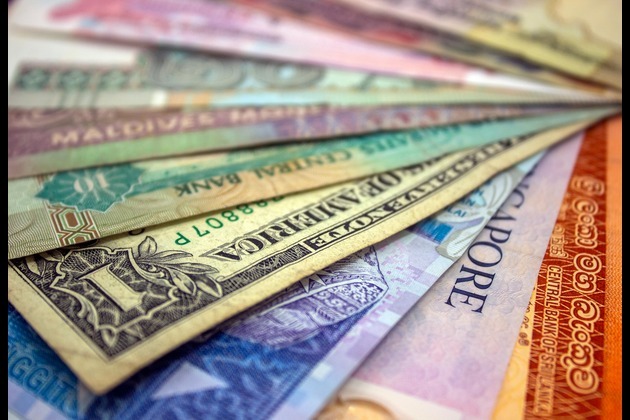Why Canada's equalization program needs a major overhaul
The Conversation
27 Mar 2020, 00:10 GMT+10
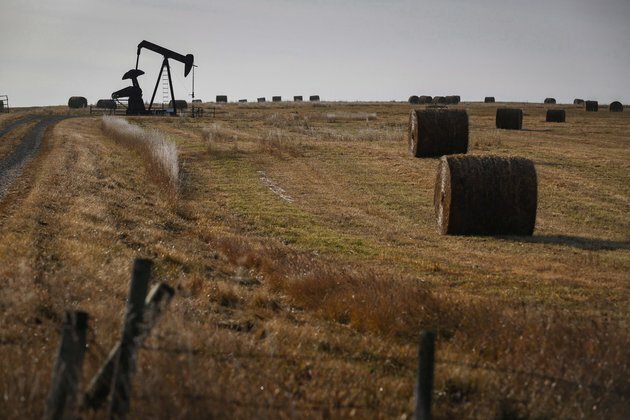
Canada's equalization program has been a perennial and controversial problem due to the sheer amount of money transferred every year, who funds it and the formula used to determine which province is eligible to receive equalization payments.
Two common questions central to much of the program's controversy are:
1) Who really pays for it?
2) Would a province's equalization status (have versus have-not) and its transfer amount be affected if different variations of the formula were to be used?
Why Canada's equalization program matters
Equalization transfers account for about 5.5 per cent of the government of Canada's annual budget. Approximately $450 billion, or $725 billion in inflation-adjusted dollars, has been transferred over the past 63 years. In 2019 alone, equalization transfers exceeded $19 billion, with nearly $13 billion going to Quebec, while some provinces did not receive anything.
The importance of the controversy over equalization has also been heightened by the disparate outcomes of various provinces, particularly Quebec and Alberta. Over the 63-year life of the program, Alberta has been a have-not province only eight times, and received a total of about $92 million (0.02 per cent of all equalization transfers). In contrast, Quebec has been a have-not province for all of those 63 years, and has received about $234.2 billion, or approximately 52.1 per cent of all equalization transfers.
It's no wonder, therefore, that the issue of who funds equalization, and who does or does not receive it, is a political hot potato.
What is equalization and how does it work?
Simply stated, Canada's equalization program involves the allocation of transfer payments across the 10 provinces. The three territories have a separate transfer program. According to the Canadian Constitution Act, the primary goals of the equalization program include providing essential public services of reasonable quality to all Canadians and furthering economic development to reduce disparity in opportunities.
Canada's equalization program is part of a broad system of federal-provincial fiscal arrangements that uses a multifaceted formula to compute a province's fiscal capacity, or earnings potential. That formula is subsequently used to determine which provinces are eligible to receive transfers, and their respective amounts.
Fiscal capacity measures the amount of tax revenues that could be raised by each of the 10 provinces, assuming a national average tax rate, from 33 revenue sources. These sources are organized under five categories: personal income taxes (PIT), corporate income taxes (CIT), consumption taxes (CT), property taxes (PT) and natural resource revenues (NRR, at 50 per cent).
Both the importance of equalization and understanding how it works provide the basis for answering those two aforementioned questions.
Who really pays for it?
Our analysis for 2018, using two different approaches, yielded the same conclusion. The program was funded by the have provinces that year: Alberta, $2.576 billion; British Columbia, $2.586 billion; Newfoundland and Labrador, $290 million; Ontario, $6.188 billion; and Saskatchewan, $565 million.
Would a province's equalization status and its transfer amount change if different variations of the formula were used?
A highly controversial issue with respect to equalization over the years relates to the impact of including or excluding any of the five categories used to determine a province's fiscal capacity, or its earning potential.
Two of the most controversial revenue streams are natural resources and property taxes. Some argue that both measurements distort fiscal capacity.
Our analysis over the period spanning 2011 to 2020 revealed that removing any of the five revenue sources would have changed a province's have/have-not status only 29 times out of a possible 1,000 event years. And it would have never changed either Alberta's have status nor Quebec's have-not status.
However, if natural resources were removed from the formula, Quebec's overall transfer amount would have been reduced in eight out of 10 years.
For instance, removing natural resources revenue from the formula in 2019 would have increased Quebec's equalization transfer by approximately $127 million in total, less than one per cent relative to the estimated $13 billion that it received.
In the remaining eight years, Quebec's transfers would have fallen each year by as little as $213 million in 2017-18 to as much as $1.97 billion in 2010-11.
Alternatively, removing property tax revenue from the formula over the 2011 to 2020 period would have resulted in Quebec's transfers being reduced each year by as much as $2.7 billion in 2010-11 to $4 billion in 2019-20.
What does it all mean?
Contrary to what many people believe, equalization is largely funded by a few have provinces, with Ontario, Alberta and British Columbia being the top three. As well, simply removing any of the five revenue streams from the current equalization formula has little to no impact on any province's have or have-not status, but it does affect the amounts transferred to the have-not provinces.
Despite the two primary goals of Canada's equalization program - providing all Canadians with access to equitable service levels and promoting economic development - there are absolutely no conditions attached to spending by recipient provinces, nor are the program's outcomes being measured.
That means it's virtually impossible to determine if the program is succeeding or failing. It does seem irresponsible to dole out in excess of $19 billion dollars a year and not hold anyone accountable for anything.
Mere tweaks
Over the past 63 years, Canada's equalization program has sporadically undergone a number of relatively minor alterations, which seems somewhat like rearranging the chairs on the deck of the Titanic.
Given the significance of the program and the ongoing controversy surrounding it, we believe that the program is in dire need of a major overhaul rather than small tweaks here and there.
Who should be involved in this task of overhauling the program, and who should lead this task? Perhaps a more relevant question to ask is: "Are there other options that may be more relevant to achieving the objectives outlined in the Canadian Constitution Act?"
Authors: Glen Kobussen - Professor, Accounting and Finance, University of Saskatchewan | Suresh Kalagnanam - Associate Professor, Accounting, University of Saskatchewan | Whitney Loerzel - Research Assistant, Accounting, University of Saskatchewan 
 Share
Share
 Tweet
Tweet
 Share
Share
 Flip
Flip
 Email
Email
Watch latest videos
Subscribe and Follow
Get a daily dose of Hawaii Telegraph news through our daily email, its complimentary and keeps you fully up to date with world and business news as well.
News RELEASES
Publish news of your business, community or sports group, personnel appointments, major event and more by submitting a news release to Hawaii Telegraph.
More InformationInternational
SectionOver 60 companies named in UN report on Israel-Gaza conflict
GENEVA, Switzerland: A new United Nations report alleges that dozens of global corporations are profiting from and helping sustain...
UK lawmakers desigate protest group as terrorist organization
LONDON, UK - Lawmakers in the United Kingdom have voted overwhelmingly to proscribe the direct-action group Palestine Action as a terrorist...
Dalai Lama to address Buddhist conference, reveal succession plan
DHARAMSHALA, India: The Dalai Lama is set to address a significant three-day conference of Buddhist leaders this week, coinciding with...
US Supreme Court backs Texas efforts to shield minors online
WASHINGTON, D.C.: In a significant ruling last week, the U.S. Supreme Court upheld a Texas law requiring age verification for users...
Turkey, France battle wildfires amid early Europe heatwave
ISTANBUL/PARIS/BRUSSELS: As searing temperatures blanket much of Europe, wildfires are erupting and evacuation orders are being issued...
Venetians protest Bezos wedding with march through the town
VENICE, Italy: Over the weekend, hundreds of protesters marched through the narrow streets of Venice to voice their opposition to billionaire...
Business
SectionStandard and Poor's 500 and and Nasdaq Composite close at record highs
NEW YORK, New York -U.S. stock markets closed with broad gains on Thursday, led by strong performances in U.S. tech stocks, while European...
Persson family steps up H&M share purchases, sparks buyout talk
LONDON/STOCKHOLM: The Persson family is ramping up its investment in the H&M fashion empire, fueling renewed speculation about a potential...
L'Oreal to buy Color Wow, boosts premium haircare portfolio
PARIS, France: L'Oréal is making a fresh play in the booming premium haircare segment with a new acquisition. The French beauty conglomerate...
Robinhood launches stock tokens for EU investors, adds OpenAI
MENLO PARK, California: Robinhood is giving European investors a new way to tap into America's most prominent tech names — without...
Wall Street diverges, but techs advance Wednesday
NEW YORK, New York - U.S. stocks diverged on Wednesday for the second day in a row. The Standard and Poor's 500 hit a new all-time...
Greenback slides amid tax bill fears, trade deal uncertainty
NEW YORK CITY, New York: The U.S. dollar continues to lose ground, weighed down by growing concerns over Washington's fiscal outlook...

